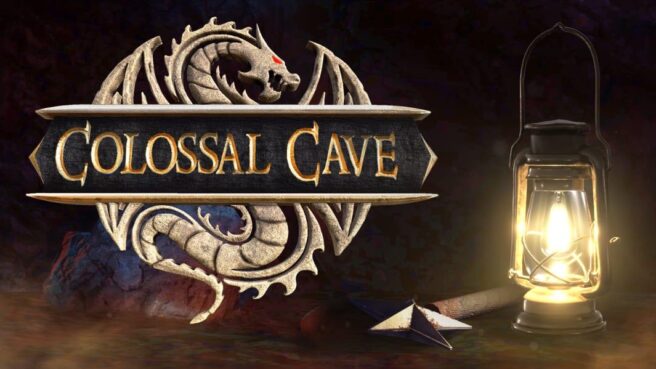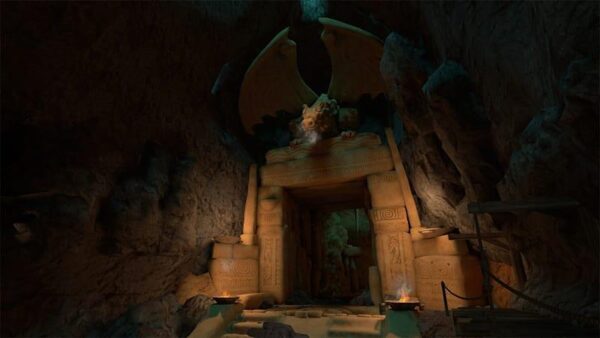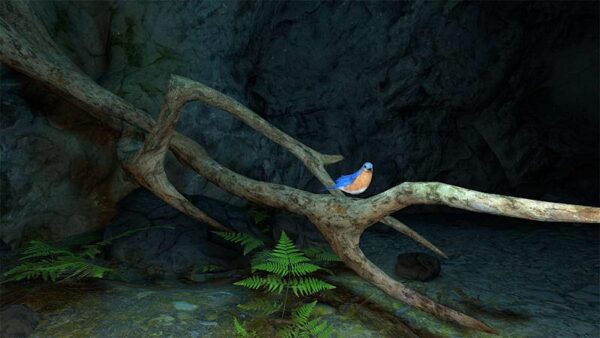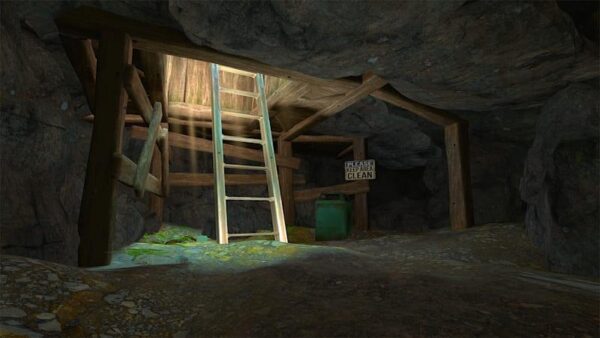
The story of Colossal Cave is that you’re a treasure hunter that is looking to explore a cave and get as much treasure from the cave as you can.
Colossal Cave was originally a text adventure back in the early days of PC gaming. The original developers of the game took the original game and made it into a full 3D game played in first person. While traversing the many areas in the game you will pick up items that you will need to use in order to solve environmental puzzles. These items can be used by themselves or combined in order to complete puzzles.
The items that you gather can be used by themselves or combined to solve puzzles. This sounds like a fun concept until you realize that the game gives you no indication on what items can be combined. On top of this, there isn’t a clear indication of what items are needed for a given puzzle. Some of these puzzles will be straightforward such as getting a key to unlock a lock, while others either won’t make sense or will use an item that is seemingly from out of left field. The puzzles in general are made unnecessarily difficult due to their wide range in difficulty.

In addition to puzzle-solving and exploration, you will have random enemy encounters. These encounters will have the enemies either attack you or run away from you. If they attack you, you must be quick to dodge the attack. Failure to dodge will result in a game over. Meaning that if you don’t save periodically, then you may be set back quite a ways or even worse, have to start the game all over again from the beginning.
Roberta Williams, who is the creator of the original text adventure game, decided to go in an entirely new direction. That direction being a full 3D experience. I can see the vision here which was to take the descriptive text of an environment and bring it to life to give the player that immersive feel. A feeling that may not have translated well if this game were presented in any other way.

While I respect and understand the art direction, the game isn’t all that impressive by today’s graphical standards. The game graphically looks rather generic, with textures being flat and bland. While there is a bit of detail in the environments you walk around in, it doesn’t feel like a living world. There isn’t anything interesting to look at and nothing that really makes you stop and admire the surroundings. Instead, you’re presented with an environment to locate items in and solve puzzles. It’s like a spacious warehouse with the occasional maze of obstacles thrown in; making it take longer to get through and less straightforward.
I can’t help but feel that the reason for this is due to the fact that it was made to be a VR experience first, with the console ports being more of an afterthought. If the console ports were prioritized over the VR experience, I think that this game would look pretty graphically impressive; but this is merely speculation.
Despite the graphical presentation and the lack of optimization for the console platforms, the game runs surprisingly well. Not great mind you, but it runs well enough to where there isn’t any slowdown that I noticed while playing the game on Switch; either docked or handheld. There were some instances where it stuttered with some puzzle elements coming into the environment and with some animations, but this was more of an irritation rather than anything game-breaking.

The sound in the game is what you would expect for a puzzle-oriented game with some good background music that is rather subtle. The prominent sounds here are the ambient sounds which fit the game well and change as you would expect based on where you are. The real gem for sound in this game is the narrator. He will narrate pretty much every action that you perform as well as observational descriptions of the environments around you. These descriptions can act as clues to what may be ahead of you such as a creature or object being described that may be required to solve a puzzle. Speaking of clues, the narrator can even give you hints if you feel like you need them. The narrator is definitely the highlight of the sound department and maybe the game as a whole. He’s fun to listen to and often pokes fun at the player for trying to do something silly like use a lantern on a locked door as opposed to a key.
Conclusion:
This game is challenging, refuses to hold your hand much and just leaves you to your own devices to figure it out as you go. While definitely sticking close to its original release, there isn’t much here for those that have never played the original or for those that are new to adventure games with a heavy emphasis on puzzles.

While I myself enjoy adventure games with puzzles, I found this game to be just too difficult to get much enjoyment out of it. The game makes too many assumptions and expects you to know how to solve these puzzles; not being the least bit intuitive as to what is needed to progress. The in-game map is very difficult to understand unless you are really familiar with old-school games like this in the first place. Yes, the game does offer an inventory system, but it’s a total mess and is less than stellar.
Fans of old-school PC games from back in the DOS days are going to have a lot of fun with this game. That’s really this game’s core audience. It’s a shame that this game wasn’t more inclusive and made receptive to a broader audience. So if old DOS games are your thing, pick this game up. Otherwise, consider looking elsewhere if you’re looking for an all-around descent and fun adventure game.
Disclaimer: A review key was provided

